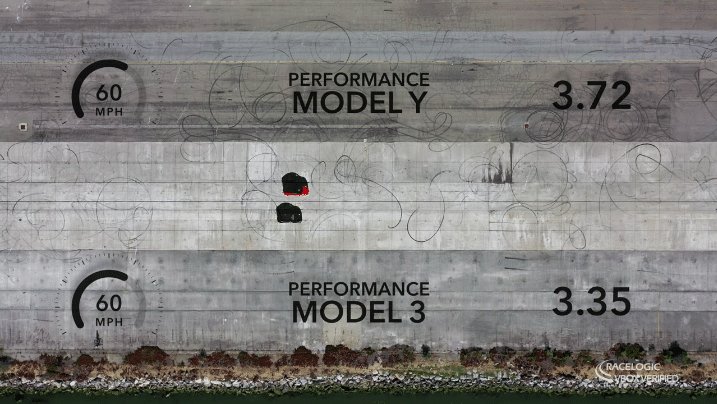Tesla Model 3 and Model Y are the two mass-market vehicles aimed at taking electric transportation mainstream. The two cars share 75 percent of the same parts and Tesla fans called “siblings.” So how do both vehicle performance variants compare handling, acceleration, and efficiency?
The Kilowatts YouTube channel aimed to satisfy the driver, the enthusiast, or even the curious. Why will Tesla’s mass-market sedan match up against the mass-market crossover?
Three experiments were conducted to assess the performance of both vehicles in three different categories. While handling tests may be subjective, the other two were based purely on data showing that Model 3 Performance was the top vehicle in a 0-60 MPH evaluation and efficiency. Yet in either group or hybrid, the Model Y wasn’t far away, which speaks volumes.
A comparison of the performance models of the two vehicles reveals cars are strikingly similar in acceleration, size, and 0-60 specifications.
Model 3 Performance
- 299 miles of range
- 75 kWh battery pack
- 162 MPH top speed
- 3.2-second 0-60 MPH
- 20″ Gray Performance Wheels
- Performance Brakes
- Carbon fiber spoiler
- Lowered suspension
- Aluminum alloy pedals
Model Y Performance
- 280 miles of range
- 75 kWh battery pack
- 155 MPH top speed
- 3.5-second 0-60 MPH
- 21″ Überturbine Wheels
- Performance Brakes
- Lowered suspension
- Aluminum alloy pedals
Comparing the two cars performed by The Kilowatts 0-60 MPH proved the Model 3 was superior in acceleration. It came just 1.15 seconds over Tesla’s average 0-60 time at 3.35 seconds, while Model Y posted a 3.72-second time on its website.

Even in efficiency, Model 3 was about 5% more efficient, recording 275 watt-hours per mile compared to the 295 watt-hours of Model Y.
All electric vehicles are strikingly similar in design, durability, and quality, and the entire fleet of the business continues to improve thanks to software updates that positively affect durability and battery tech.
Throughout the past few years, Tesla has made battery production and technology a key focus of its company’s growth. Improvements in battery anodes and electrodes, along with advances in cell-life durability, have allowed the company to become the first automotive manufacturer to produce a 400-mile EPA-estimated electric car.
Although Model 3 and Model Y remain Tesla’s two most common sellers, each vehicle appeals to different practicality and performance needs. Both cars deliver remarkable acceleration packed with successful range ratings for long-distance travel. Nonetheless, choosing which vehicle to purchase depends on what the owner actually wants.
The Model Y crossover has more cargo space for those with small families. Model 3 offers plenty of room for users, but is not as large as its Model Y twin.
When deciding one to buy, it’s all personal choice. Although the Model 3 currently offers slightly faster speeds and better performance, the Model Y provides cargo space that would be ideal for those commuting to and from soccer or picking up the weekly grocery shuttle.
See Model Y and Model 3 comparison video below.
Reported by Teslarati.
Want to buy a Tesla Model 3, Model Y, Model S, or Model X? Feel free to use my referral code to get some free Supercharging miles with your purchase: http://ts.la/guanyu3423
You can also get a $100 discount on Tesla Solar with that code. No pressure.





